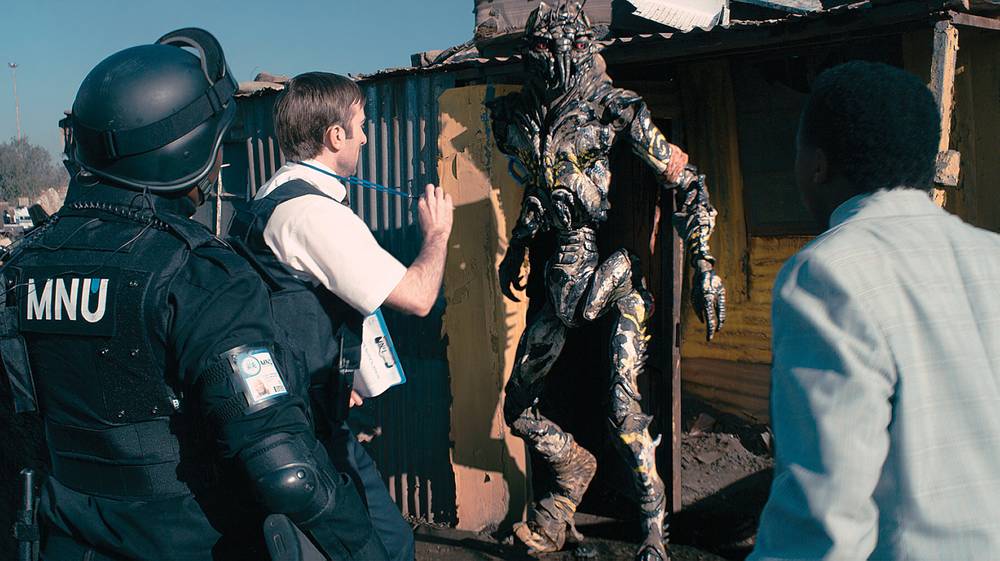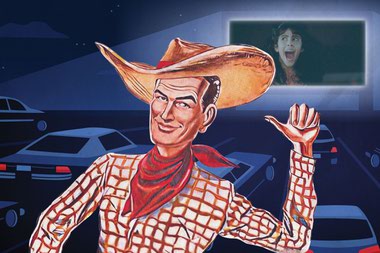Twelve years ago, Paul Verhoeven turned Robert A. Heinlein’s jingoistic ’50s sci-fi novel Starship Troopers into a plug-ugly satire of homicidal xenophobia, making his white-bread human “heroes” even more grotesque than the giant insectoid creatures they regularly slaughtered. Trouble was, mainstream America didn’t really get the sick joke, even when Neil Patrick Harris turned up in full quasi-Nazi regalia to conduct sadistic experiments on captured bugs. Perhaps mindful of that film’s commercial failure, South African director Neill Blomkamp dispenses with subtlety altogether in his similarly subversive debut feature, District 9, crafting a political allegory so in-your-face that nobody could possibly fail to get the point. Blunt doesn’t necessarily mean ineffective, though. District 9 eventually devolves into a fairly conventional buddy movie and action flick, but its lengthy, remarkably detailed setup addresses bleak truths about the plight of the dispossessed in ways that might well be unbearable if not swaddled in genre.
The Details
- District 9

- Sharlto Copley, Jason Cope, Nathalie Boltt.
- Directed by Neill Blomkamp.
- Rated R.
- Beyond the Weekly
- District 9
- Rotten Tomatoes: District 9
- IMDb: District 9
Structured as a fake documentary, the film takes place in Johannesburg, where a city-sized spacecraft mysteriously stalled 20 years ago, hovering motionless for months a few miles aboveground. Eventually, its starving, frightened occupants, who resemble huge bipedal prawns, were evacuated by humanity and given what was meant to be temporary shelter in a hastily constructed shantytown that looks pretty much exactly like (and was in fact filmed in) modern-day Soweto. Two decades later, they remain 10th-class non-citizens, and it’s the task of Wikus van der Merwe (Sharlto Copley) to serve the aliens eviction notices, informing them that they’re to be moved to the new District 10, which amounts to a concentration camp. While searching one particular shack for weapons, however, Wikus accidentally sprays himself with an alien fluid that somehow triggers a genetic mutation, transforming his left arm into a prawn claw that can fire the aliens’ ray guns. With the South African government eager to harvest his organs for bioweapons research, Wikus has little choice but to hide out in D9 and seek help from the very beings he’d previously treated like refuse.
Admittedly, that’s a tad heavy-handed, and certain aspects of the scenario aren’t terribly plausible. Humans and aliens have no trouble understanding each other’s language, for example, and that’s a huge stretch even given 20 years of cohabitation. On the whole, though, District 9 pulls few punches in depicting the sorry legal status and the (literally) subhuman living conditions of these intergalactic refugees. As Wikus travels from one dilapidated hovel to the next, addressing the inhabitants with brutal condescension and cheerfully incinerating their nurseries (which are slaughterhouse-repulsive to human eyes, but still), our sympathy shifts so decisively to the aliens’ side, despite their hideous appearance, that we can’t help but feel shameful about belonging to such a noxious, unfeeling, destructive species—precisely the visceral gut reaction that Verhoeven was going for, I imagine.
What held Starship Troopers back from greatness, alas, was its monotonously repetitive second half, in which the film made a dispiriting shift from knowing satire to mindless shoot-’em-up. District 9 doesn’t tumble nearly as far, but it does lose some of its rough-hewn, mock-doc energy once Wikus teams up with a prawn named Christopher Johnson and his ugly-cute shrimp of a son. (That the aliens have been allotted generic human names, picking up where Ellis Island left off, is just one of the film’s numerous sly gags.) The trajectory of the film’s second half is pure buddy-flick formula sprinkled with gratuitous explosions and lens-smearing gore—though there are still details to savor, like the constant view of the gigantic mothership in the background of exteriors, as apparently ineradicable a part of the landscape as a mountain range. And that first powerhouse hour makes up for a lot. Genre efforts this bracing are sufficiently rare that it’s hard not to treasure them, even when they’re somewhat compromised.







Previous Discussion: